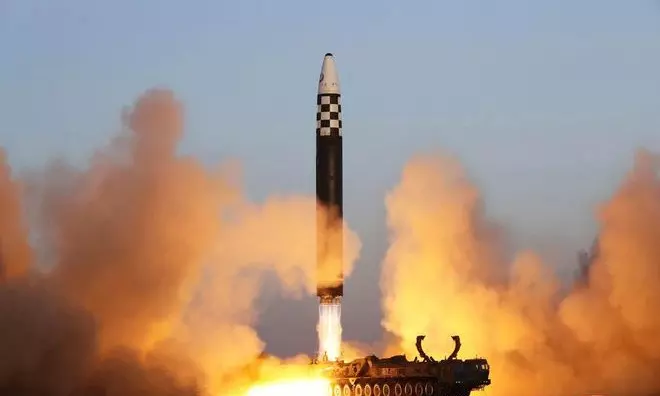
N Korea fires ballistic missile with potential to cover entire US: Japan
text_fieldsTokyo: North Korea on Monday launched an intercontinental ballistic missile (ICBM) with a potential range covering all of the United States, Japan's defence ministry said.
“The ICBM-class ballistic missile launched this time, if calculated based on the trajectory, depending on weight of warhead, could have a flying range of over 15,000 kilometres (9,320 miles), meaning the whole of the US territory would be within range,” Shingo Miyake, parliamentary vice-minister of defense, told reporters at a news conference in Tokyo.
The missile flew at a highly lofted trajectory for about 73 minutes and to an altitude of 6,000 kilometres (3,700 miles) and a distance of about 1,000 kilometres (621 miles) before falling into the sea west of the northern Japanese island of Hokkaido, Japanese authorities reported, reported NDTV.
“Japan lodged a firm protest against the launch, this time through its embassy channel in Beijing, and strongly condemned it," Miyake said.
The short-range missile was also launched from the Pyongyang area towards the waters between the Korean Peninsula and Japan, with the test taking place at about 10:38 p.m. (13:38 GMT), according to South Korea. The projectile flew for about 570km (354 miles) before falling into the ocean.
South Korea said that the launches were “a grave provocation” that threatened international peace.
While the type of missile fired was not reported, Jeffrey Lewis, a professor at the James Martin Center for Nonproliferation Studies at the Middlebury Institute of International Studies, said Monday’s test was likely the third of the Hwasong-18 missile, a powerful solid-fuelled ICBM North Korea also launched in April and July, CNN reported.
It shows a maturing North Korean missile program, Lewis said, adding that “If this is indeed the third successful flight test in a row, that would be a good record of reliability,” CNN reported.
The ICBM fired in July flew about 1,000 kilometres (621 miles), staying airborne for 74 minutes, according to Japan’s Defense Ministry.
The back-to-back launches came following an agreement between South Korea and the US to bolster their joint nuclear deterrence capabilities in the face of evolving nuclear threats from North Korea.
This year, Pyongyang has carried out a record number of weapons tests and launched a spy satellite as it moves ahead with leader Kim Jong Un’s plans to modernise North Korea’s military capabilities.
With agency inputs
























